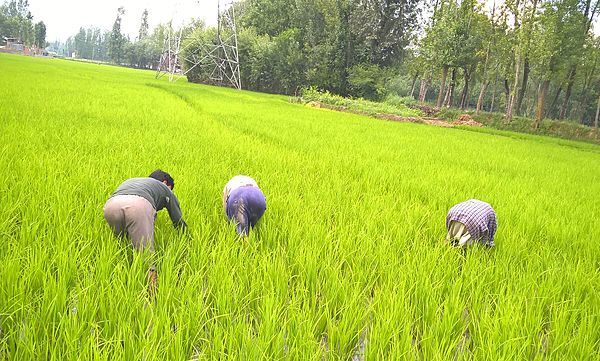 Growth in developing Asia for 2017 and 2018 will exceed previous projections as a result of the broad-based recovery in global trade, robust expansion in major industrial economies, and improved prospects for China, predicts a new Asian Development Bank (ADB) report.
Growth in developing Asia for 2017 and 2018 will exceed previous projections as a result of the broad-based recovery in global trade, robust expansion in major industrial economies, and improved prospects for China, predicts a new Asian Development Bank (ADB) report.
In an update of its flagship annual economic publication, Asian Development Outlook (ADO) 2017, ADB forecasts gross domestic product (GDP) growth of 5.9% in 2017 and 5.8% in 2018 for developing Asia.
“Growth prospects for developing Asia are looking up, bolstered by a revival in world trade and strong momentum in the PRC,” said ADB chief economist Yasuyuki Sawada.
The dollar value of the region’s exports surged by 11% in the first five months of 2017 over the same period in the previous year, and the value of its imports rose by 17%. The pickup follows two consecutive years of contracting export values caused by falling commodity prices and subdued external demand for manufactures. Excluding China, the eight largest regional developing economies saw real manufacturing exports rebound.
Industrial economies’ growth will reach 2% in 2017 and 2018, up by 0.1 percentage points from the April 2017 forecast. Consumers are keeping the world’s largest economy on track, as the United States’ expansion enters its ninth year. Growth in Japan surprised on the upside, spurred by a combination of improving consumer confidence and business sentiment. Expansive fiscal and monetary policies, easing political uncertainty, and robust market confidence are driving the recovery in the euro area, the report said.
Expansionary fiscal policy and unanticipated external demand helped China exceed expectations in the first half of 2017. Output will increase 6.7% in 2017, an increase of 0.2 percentage points over the previous forecast. In 2018, growth will slow to 6.4% as anticipated reforms to trim industrial overcapacity and reduce financial risks kick in.
India continues its strong showing, although demonetization and implementation of the new goods and services tax regime have dented consumer spending and business investment. These short-term disruptions are expected to dissipate, allowing these initiatives to generate growth dividends over the medium term. India’s GDP growth is downgraded to 7% in FY2017, a 0.4 percentage point drop from the April forecast. In FY2018, the forecast is adjusted down to 7.4% from 7.6%.
Southeast Asia, meanwhile, is set for stronger growth as output accelerates steadily from 5% in 2017 to 5.1% in 2018, an upgrade from 4.8% and 5% in the previous forecast. Regional growth will be led by rising exports from Singapore and Malaysia, while the forecasts for regional leaders Indonesia and Thailand are maintained.
Growth forecasts for Central Asia are revised up this year and next amid stable oil prices, improving prospects for the Russian Federation, and rising remittances. The Pacific outlook, on the other hand, is retained for 2017 but adjusted slightly downward for 2018 as prospects for the largest Pacific economies—Papua New Guinea and Timor-Leste—are unchanged.
Risks to the region have become more balanced. Loose fiscal policy in the U.S. and lower oil prices are potential upside risks to the region, while downside risks include tighter global liquidity, economic disruption from a geopolitical event, or a weather-related disaster.
Photo: Mirishfaqhussain





